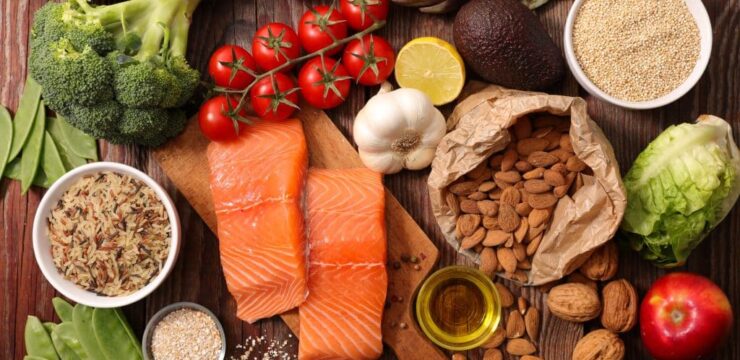Walking into a grocery store can sometimes feel overwhelming. With shelves lined with countless products, advertisements competing for attention, and tempting treats at every corner, it can be easy to fill the cart with items that do not necessarily support long-term health goals. Smart grocery shopping, however, is one of the simplest and most effective steps toward maintaining a nutritious lifestyle. By learning to make thoughtful choices at the store, you set yourself up for success in the kitchen and beyond.
Healthy eating begins before food even reaches your plate. The decisions you make while shopping will shape your meals for the week ahead. Instead of relying on last-minute takeout or processed snacks, stocking your pantry and fridge with nourishing foods gives you both flexibility and peace of mind. A little preparation and awareness while shopping makes all the difference in building a balanced, sustainable routine.
The first key to smart grocery shopping is planning. Without a plan, it is easy to wander the aisles and pick up items on impulse. Creating a simple meal plan for the week can help organize your shopping trip. This does not need to be complicated; even listing three or four dinners, along with breakfast and snack ideas, provides structure. From there, you can write down the ingredients you need, making your grocery list both practical and intentional. Planning in this way helps reduce food waste, saves money, and keeps you focused on healthier choices.
Another smart approach is to shop the outer aisles of the grocery store first. This is where most stores stock fresh produce, lean proteins, dairy, and whole foods. By filling your cart with fruits, vegetables, whole grains, and quality proteins early in the trip, you ensure that most of your basket consists of nutrient-rich foods. Once these essentials are in place, you can then explore the inner aisles for pantry staples like beans, nuts, whole-grain pasta, or spices. Approaching the store in this order can naturally minimize the temptation to load up on ultra-processed snacks.
When selecting produce, variety is key. Different colors in fruits and vegetables indicate different nutrients, so choosing a rainbow of options ensures you are covering your nutritional bases. Brightly colored peppers, leafy greens, carrots, berries, and citrus fruits each provide unique benefits. Fresh produce is excellent, but frozen fruits and vegetables can be just as nutritious and often more convenient, especially when certain items are out of season. Keeping some frozen spinach, berries, or mixed vegetables on hand makes it easier to prepare healthy meals quickly.
Reading labels is another important part of smart shopping. Many packaged foods are marketed as healthy but may contain hidden sugars, sodium, or preservatives. Take a moment to look at the ingredient list and nutrition facts panel. A good rule of thumb is to choose products with shorter ingredient lists and recognizable foods. If sugar or salt appears near the top of the list, it may be worth reconsidering. By paying attention to labels, you empower yourself to make more informed decisions.
One common challenge shoppers face is balancing health with budget. It is possible to eat well without overspending by being strategic. Buying in bulk, choosing store brands, and purchasing seasonal produce are all cost-effective approaches. For example, apples and oranges are often more affordable when they are in season, and grains like brown rice or oats bought in larger packages usually cost less per serving. Legumes such as lentils and beans are both inexpensive and packed with nutrients, making them a smart addition to any grocery list.
Smart grocery shopping also means preparing for busy days. Stocking up on healthy convenience items can prevent the need for less nutritious choices when time is limited. Items like pre-washed salad greens, canned tuna, Greek yogurt, or whole-grain wraps can be quickly assembled into balanced meals. Having these options ready reduces the likelihood of reaching for fast food when life gets hectic.
Another helpful strategy is to avoid shopping when you are hungry. A hungry shopper is far more likely to give in to cravings and fill the cart with processed snacks. Eating a light meal or snack before heading to the store makes it easier to stick to your list and resist temptation. Pair this with practicing mindfulness while shopping by checking in with your goals and remembering why you are prioritizing healthy choices.
In addition to focusing on individual items, think about the balance of your cart as a whole. Ideally, your basket should reflect the same principles you want on your plate: a mix of vegetables, fruits, lean proteins, whole grains, and healthy fats. This balance ensures that you have the building blocks for meals that are both nourishing and satisfying. For example, combining whole-grain pasta with grilled chicken, olive oil, and roasted vegetables creates a well-rounded dish, and having the right groceries on hand makes it possible.
It is also helpful to consider the long-term perspective. Grocery shopping is not just about one week’s meals but about building habits that make healthy eating sustainable. By consistently choosing whole foods, reducing processed options, and practicing moderation, you gradually shape a lifestyle that supports wellness without feeling restrictive. Over time, these choices become second nature, and the grocery store becomes a place of empowerment rather than confusion.
Smart grocery shopping can even extend beyond your own health. Supporting local farmers’ markets, choosing sustainably sourced fish, or selecting fair-trade products can contribute to the well-being of your community and environment. While these may not always be possible for every shopper, making small changes where you can reinforces the idea that food choices carry a greater impact.
Ultimately, healthy eating starts with what you bring home. If your kitchen is stocked with wholesome, nourishing foods, you make it easier to prepare meals that fuel your body and mind. Each shopping trip is an opportunity to set yourself up for success, practice mindful decision-making, and align your choices with your goals. With preparation, awareness, and a balanced approach, grocery shopping becomes less of a chore and more of a powerful tool for living well.
Smart grocery shopping for healthy eating is not about perfection but about progress. It is about making small, intentional choices each time you visit the store and allowing those choices to add up over time. By approaching the process with planning, mindfulness, and a willingness to learn, you can transform your grocery trips into a foundation for a healthier, happier lifestyle.






